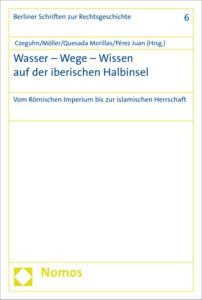This research project examined and evaluated the foundations and regulations of Roman law concerning water usage and distribution. The legal regulatory options were investigated and compared based on an analysis of juridical, gromatical and literary sources.
Research
Water is subject to legal norms in a variety of ways. By the 5th century BC private aqueducts had already been mentioned in the Law of the Twelve Tables. In the course of the Republican period, water use was expanded in the area of private law and public law and underwent further development from a legal standpoint. In the area of private law, this included easements (servitudes), which had a lasting influence on the formation of neighboring rights by entitling owners of property to draw or gather water from neighboring property and to lead their animals there to drink. From the 2nd century BC to the time of Justinian (6th century AD), lawyers were frequently occupied with questions involving how to establish an effective basis for such rights and how those rights should be formulated and exercised; they were also concerned with regulations in water communities and with questions of use and protection of public aqueducts. Furthermore, there are regulations governing possible damages caused by water, especially rainwater. Prophylactic measures are provided for, such as a promise to pay a fine for cases in which damage is actually caused (cautio damni infecti ) or the claim that measures employed by a neighbor have increased rainwater runoff in a damaging manner (actio aquae pluviae arcendae). There is also the regulatory option of servitudes for cases of water damage. This option was established first in urban areas, and applied to rights involving runoff from the eaves of buildings and other water runoff (stillicidium, flumen). However, the concept was expanded in the 1st century BC through the recognition of immission servitudes to include rural areas as well.
The goal of this research was to produce a synopsis of these legal regulatory options based on an analysis of both juridical and literary sources. Particular attention was given to texts written by specialists. The research was drawn on work conducted by research group (B-I-1) Surveying and Limitation in the first funding period of Topoi (translation of and commentary on surveying texts / Corpus Agrimensorum Romanorum). Additional groundwork includes the monograph on servitudes which was revised by Cosima Möller (Cosima Möller, Die Servituten, Göttingen 2010) and which contains passages on water servitudes and neighboring rights regulations.
In the course of the investigation a database concerning Roman Water Law has been built during the funding in the first two years from 2012 to 2014 and was continued by the research project (B-1-4) Infrastructure:
The project´s work has been presented within the three-part conference “Wasser – Wege – Wissen auf der iberischen Halbinsel” (2014, 2016, 2017) and the related publication:

